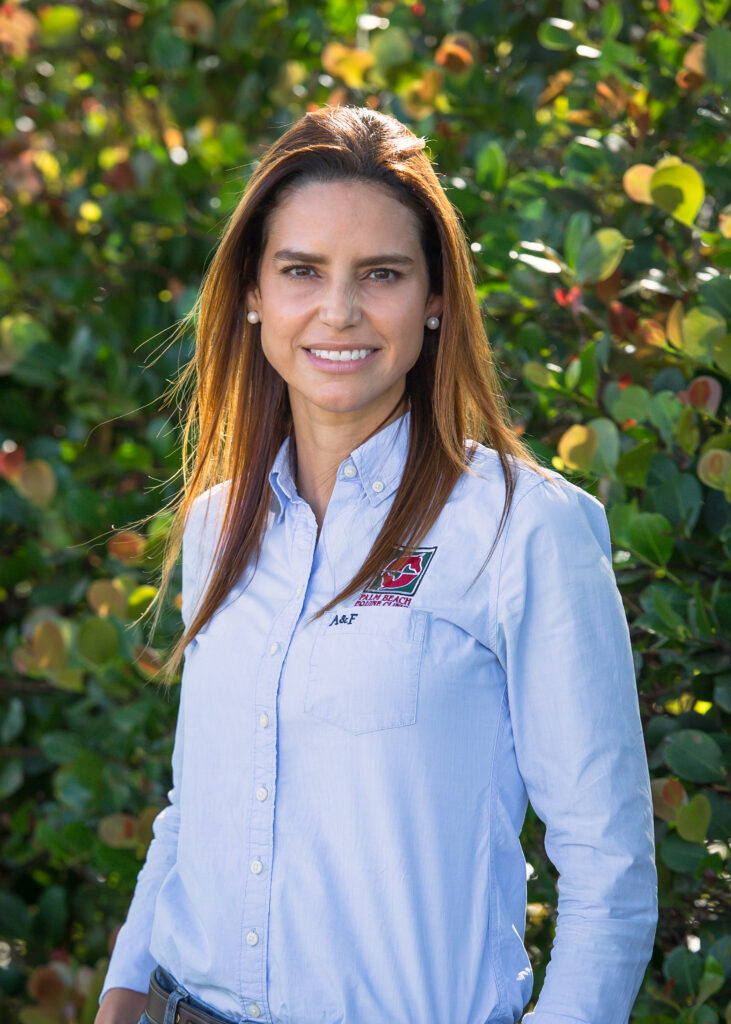5 Steps to Chiropractic Adjustment with Palm Beach Equine Clinic Dr. Natalia Novoa
Palm Beach Equine Clinic combines the best of conventional and alternative medicine to provide comprehensive, full-body care to both sport and companion horses. Dr. Natalia Novoa specializes in utilizing the best of both approaches to provide unmatched results.
“I believe that treating issues with both alternative therapies and conventional medicine is a perfect approach,” said Dr. Novoa, who has been a full-time member of Palm Beach Equine Clinic since 2011. “We can’t exchange one for other, and the combination usually makes for a great treatment plan.
“A chiropractic adjustment is an alternative therapy that I absolutely recommend,” continued Dr. Novoa. “It’s very useful for a horse that has injuries or soreness issues, but it’s also something that is very important for maintenance. You want to prevent problems instead of treat them. If a misalignment happens, that creates incorrect friction, which then leads to pain in the joints, muscle soreness, and stress on the tendons and ligaments, possibly leading to a soft tissue injury. Another advantage of chiropractic adjustments is that it is useful for FEI competition horses because of the restriction on medications at that level. It’s a way we can effectively treat a problem and stay within the regulations.”
According to Dr. Novoa, veterinarians who incorporate chiropractic adjustments in their treatment options do so with their own style. She has developed a system that she finds most effective, and her secret is out!
Dr. Novoa’s five steps to a chiropractic adjustment:
1. Horse History
Patient history is a pillar of medicine, which provides pivotal information.
“I always want to speak with riders, trainers, and grooms to get an understanding of what they feel and see,” said Dr. Novoa. “They spend the most time with the horse and know it the best. Sometimes, clients ask me to evaluate the horse first and tell them what I see and feel, which is when most people ask me if I have a crystal ball.”
While Dr. Novoa doesn’t travel with a crystal ball, her skill at reading a horse leads her to the second step.
2. Scan Acupuncture Points – “Acuscan”
A scan of the acupuncture points on a horse, which Dr. Novoa calls an “acuscan,” is always her next move. She checks the main acupuncture points from head to tail by using her tool of choice – the round end of a needle cap. This allows her to put firm pressure on a very specific point and then evaluate the horse’s reaction to that pressure.
“A reaction can indicate, for example, left front lameness or a sore neck, etc.,” said Dr. Novoa. “It’s not voodoo; you are piecing together your findings in the exams with the symptoms that the horse is presenting.”
3. Evaluate Horse Movement
After scanning the horse, Dr. Novoa likes to always see the horse move to dig deeper into any reactions she noticed while checking acupuncture points. She starts at the walk and then observes at the trot.
“This is where I incorporate conventional medicine and supplement my evaluation with flexion tests or hoof testers depending on what I see,” said Dr. Novoa. “I want to produce the most detailed picture before moving on to the adjustment.”
4. Make the Adjustments
“I adjust a horse the same way every time,” said Dr. Novoa. “This specific order ensures that I don’t miss anything and the horse receives a thorough adjustment of its entire body with special attention paid to any problem areas that I uncovered earlier in the process.”
Check and adjust these 10 points:
Point 1: TMJ (temporomandibular joint)
Point 2: Poll and neck
See fig. 1 & 2
Point 3: Front limbs, including lower limb joints and carpus (knee)
See fig. 3
Point 4: Shoulder and scapula on both sides to compare one with the other
Point 5: Withers
Point 6: Pelvis and back
See fig. 4




Point 7: Hind limbs, including hocks and stifles
Point 8: Sternum and T1/T2 vertebrae
Point 9: Tongue release
Point 10: Myofascial release if muscles spasm or a tense back and neck are indicated
5. Secondary Acupuncture Point Scan
“The final piece of the puzzle is to scan the acupuncture points again to compare what we had before versus what we have after the adjustment,” said Dr. Novoa. “If there are still reactions, I may do acupuncture or electro-acupuncture and utilize a class four regenerative laser.”
After her secondary scan, Dr. Novoa formulates a short and long-term treatment plan. In her experience, adjustments last for four to six weeks before a follow-up adjustment is indicated. If certain chronic injuries are flaring up, a horse may need an earlier follow-up.
“It’s all about listening to the horse. They will always tell you what they need; you just have to listen!”
Dr. Novoa
